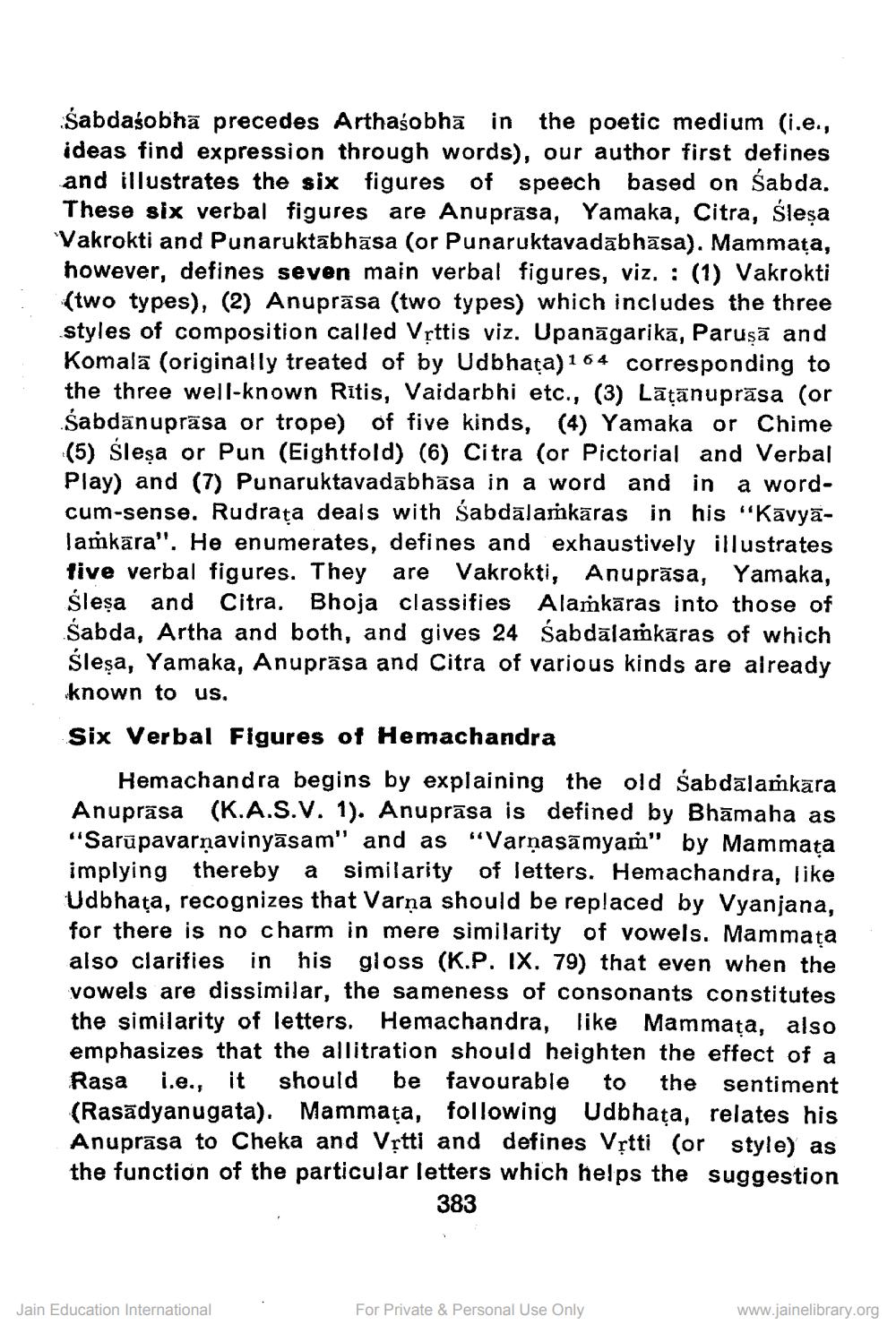________________
Sabdaśobhā precedes Arthaśobha in the poetic medium (i.e., ideas find expression through words), our author first defines and illustrates the six figures of speech based on Sabda. These six verbal figures are Anuprāsa, Yamaka, Citra, Śleṣa Vakrokti and Punaruktābhāsa (or Punaruktavadābhāsa). Mammata, however, defines seven main verbal figures, viz. : (1) Vakrokti (two types), (2) Anuprāsa (two types) which includes the three styles of composition called Vṛttis viz. Upanāgarikā, Paruṣā and Komala (originally treated of by Udbhata) 1 164 corresponding to the three well-known Ritis, Vaidarbhi etc., (3) Laṭanuprāsa (or Sabdanuprāsa or trope) of five kinds, (4) Yamaka or Chime (5) Śleṣa or Pun (Eightfold) (6) Citra (or Pictorial and Verbal Play) and (7) Punaruktavadābhāsa in a word and in a wordcum-sense. Rudrața deals with Sabdalaṁkāras in his "Kavyalamkara". He enumerates, defines and exhaustively illustrates five verbal figures. They are Vakrokti, Anuprāsa, Yamaka, Śleṣa and Citra. Bhoja classifies Alamkaras into those of Sabda, Artha and both, and gives 24 Sabdalaṁkaras of which Ślesa, Yamaka, Anuprāsa and Citra of various kinds are already known to us.
Six Verbal Figures of Hemachandra
Hemachandra begins by explaining the old Sabdalaṁkāra Anuprāsa (K.A.S.V. 1). Anuprāsa is defined by Bhamaha as "Sarupavarṇavinyasam" and as "Varṇasamyam" by Mammaṭa implying thereby a similarity of letters. Hemachandra, like Udbhata, recognizes that Varṇa should be replaced by Vyanjana, for there is no charm in mere similarity of vowels. Mammața also clarifies in his gloss (K.P. IX. 79) that even when the vowels are dissimilar, the sameness of consonants constitutes the similarity of letters. Hemachandra, like Mammața, also emphasizes that the allitration should heighten the effect of a Rasa i.e., it should be favourable to the sentiment (Rasadyanugata). Mammata, following Udbhata, relates his Anuprāsa to Cheka and Vṛtti and defines Vṛtti (or style) as the function of the particular letters which helps the suggestion
383
Jain Education International
For Private & Personal Use Only
www.jainelibrary.org




